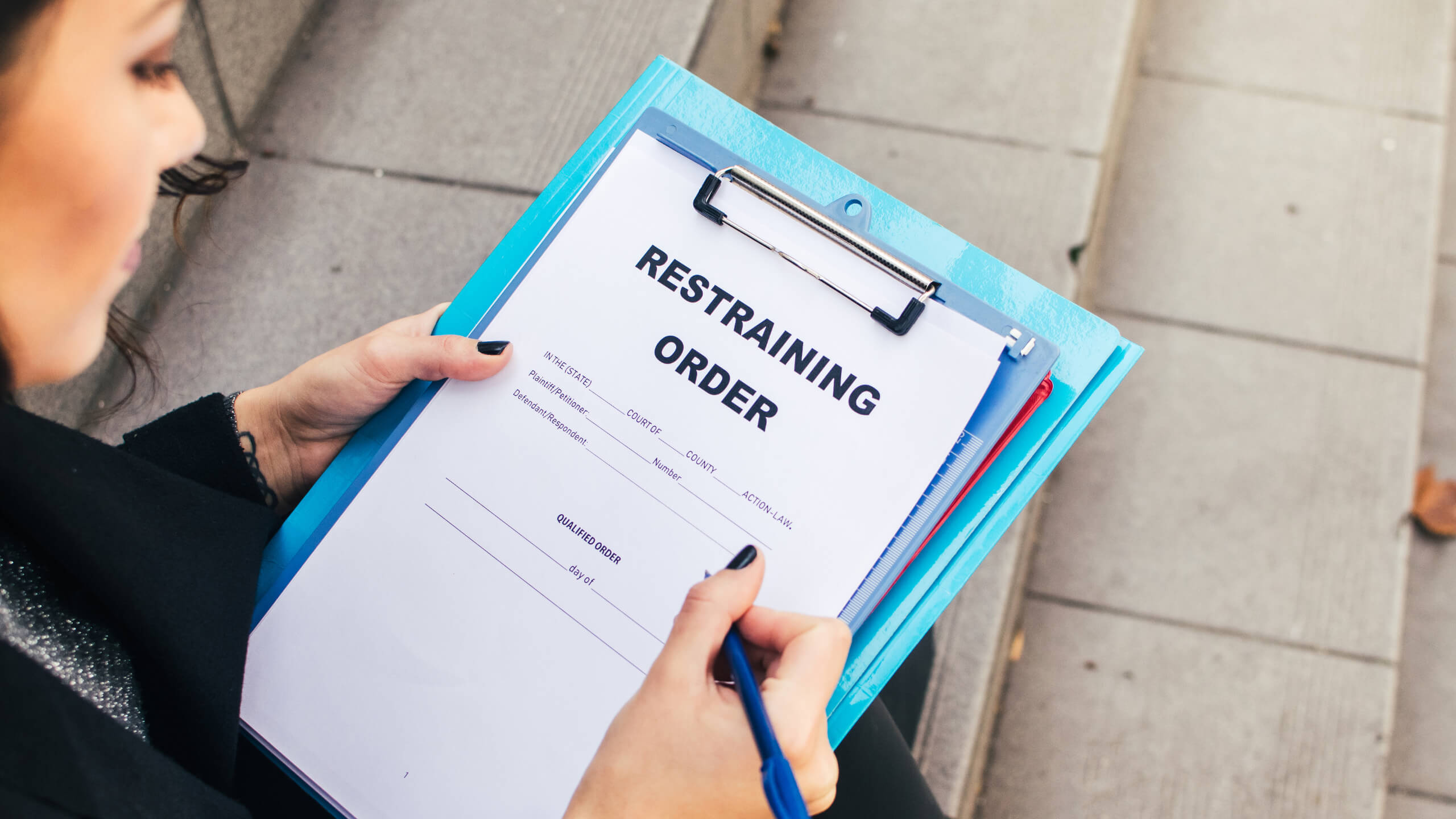Restraining Order Basics

The Types of Orders
When someone thinks about a protection order, the most common one that jumps to mind is the restraining order. Popular because of TV and movies, the restraining order is effectively an enforceable command from the legal system (IE the Court and the Police) that Person A is no longer allowed to do something to Person B. Typically, we see distance requirements in the order, like stay 500 yards away from them.
In Massachusetts, we call this an “Harassment Protection Order.” It really means the same thing as restraining order, but we like to do things a little differently have to give the order its own name. A Harassment Protection Order is there to protect you against someone who is harassing, stalking, or otherwise threatening (or committing) bodily harm to you regardless of your relationship to them.
In addition to a Harassment Protection Order, there is also what’s called an “Abuse Prevention Order,” also known as a “209A order.” An Abuse Protection Order is specifically targeted at protecting individuals from abuse in domestic violence situations. The abuser must have a relationship with the abused for this specific type of order, such as a family, intimate partner, or a roommate. Otherwise, you would be looking for a Harassment Protection Order.
WHEN TO ASK FOR A PROTECTIVE ORDER
Protective orders are designed to keep you and any children under your care safe from abuse or harassment at the hands of another person.
You should ask for an Abuse Prevention Order (209A order) if:
- The person abusing you or your children is someone you are living with, a significant other (spouse or unmarried partner), a family member, the parent of your child(ren).
- You’re suffering from abuse because your abuser has attempted to harm you or physically harmed you, caused you to fear that you or your children are likely to be harmed at any moment, or you were forced to have sex by physical coercion or threats.
To be clear, these qualifiers are all OR statements. You do not need to meet all the criteria listed to file for a 209A order. You can file for protective order in cases of domestic violence if you are threatened with physical harm OR someone is actually harming you. You do not need to meet all of the criteria.
Harassment Protection Orders are much broader in scope because it is not specifically confined by the type of relationship you have with someone, nor is it limited to instances of domestic violence. You can ask for a Harassment Protection Order because someone is willfully and maliciously targeting you, is threatening your well-being and safety, forcing you to have sex with them, or has committed certain crimes against you at least once (IE rape, criminal harassment, criminal stalking, or indecent assault and battery).
HOW PROTECTIVE ORDERS WORK
All types of protective orders will contain specific provisions within them that detail what can and cannot be done by an abuser or harasser. Common examples of restrictions are no contact orders where the offending party is prohibited from making any kind of contact with the other person, there can be minimum safe distances where the offender cannot come within a certain distance of the other person, and there can even be a monetary award where the offender has to provide compensation as a result of their actions (such as medical bills, cost of lock replacements, etc.). In more extreme cases where the person filing (the Plaintiff) needs extra security, they can have their contact information impounded and hidden from the order. This means that their contact information will only be available to the court and other officers of the law and not be made public.
When filing for a restraining order, it is possible to file and have a hearing without notifying the offender (the Defendant) first. This is called an “ex parte order,” and you will present your case before a judge who will grant or deny the order with a temporary status. Temporary status lasts for up to 10 days, at which point, a review hearing will be conducted with all parties required to appear and the judge will determine whether or not they should extend the order for some longer term, or make it permanent.
If an extension is granted, you will automatically be scheduled another review hearing at the end of the extension. If you are not told about this hearing directly at the time of the extension, it will be listed on the final order from the court. It is absolutely critical that you appear at this hearing because it will determine whether or not the order should be renewed. It does not matter how confident you are the order will be ended or renewed – there are too many instances where people don’t show up to these hearings and end up with a new order that they did not want.
Finally, if you or the offending party want to make a change to an order, you will have to submit that request to the court. Only a judge can make a modification to a court order. Informal agreements outside of the court have no authority in this case, and even if the plaintiff invited a certain prohibited behavior to happen, the defendant will be in violation of the protective order unless the judge changed it first.
GET HELP FROM AN ATTORNEY
Once a restraining order has been put in place, for better or worse, they are notoriously difficult to overturn. Ensuring that you have representation for the review hearing, or even at the point of filing for your order, can make or break your case.
The team at O’Connor Family Law has been there before, and we will help you move forward in protecting your rights.
Learn more about Protective Orders in Massachusetts or schedule a consultation by calling 774-703-3755 or by visiting our website.


